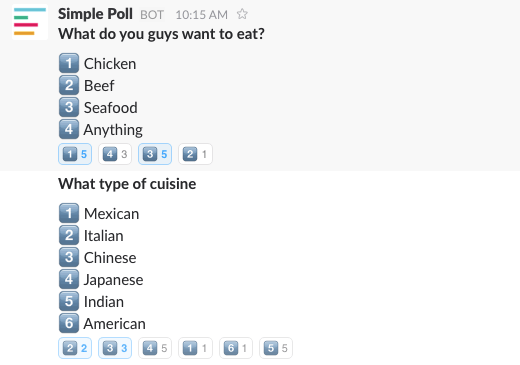Other Bot Platforms
Episode #9 of the course Building your own Facebook Messenger bot by Carylyne Chan
Yesterday, we covered some of the primary issues that could befall your bot. Today, we’ll look forward a bit more and explore other platforms that your bot could live on.
Since the recent emergence of bots, many platforms have started opening up to welcome bots into their ecosystem. Some of the biggest platforms (other than Messenger) also give you the ability to reach more users with the same value proposition.
Telegram
Secure consumer messaging platform Telegram has been an early proponent of bots, being one of the first few platforms to open up their bot platform for developers to create interesting bot experiences for users. On Telegram, your bot can hang around within some conversations and offer suggestions with slash / commands, or it can be a standalone bot that the user can talk to (like the common ones on Messenger). You can even create game bots or quiz bots to engage users if you find them interesting.
Slack
Enterprise chat platform Slack has also been a long-time supporter of bots that help increase the productivity of their enterprise/team users. Lots of bots ranging from Slack daily digest bots to bots that pull in information from other sources or systems have been built since its inception. It is a great option if your target users are also avid users of Slack—you have a good way to help them boost their productivity or team engagement with your bot.

Twitter has opened up its direct messages for bots, letting more Twitter account managers automate their user engagement or support using Twitter DM. You can build a bot for Twitter if your users often message you through DM. The use case for having a Twitter DM bot is very close to that of Messenger bots, and you are likely to have overlaps in users on Messenger and Twitter (which is a good thing, because you can adapt your conversational skills to both platforms).
The popular Chinese messaging platform WeChat also enables businesses, called “Official Accounts,” to set up bots that can respond to users. A slight difference for WeChat is the general format of bots, which tend to resemble quick links at the bottom of the screen that direct users into a deep-linked browser rather than a conversational user interface itself.
Line
Line, another widely used messaging app originating from Asia, also allows official accounts to develop bots that can relate to users. Many brands and celebrities use Line to engage their fans, using it as a broadcasting tool for interesting content. Stickers are also a big part of the platform, and some bots offer free stickers for participating in polls with the bot.
Kik
WeChat-backed Kik is an American messaging app targeted mostly at youths, and it also has bots that are mostly promotional in nature. Many bots entice users to engage with them by giving away Kik points that can be redeemed for perks in the store.
Skype
Microsoft-owned Skype has also caught on to the bot craze and is tapping developers to create bots. Being part of the same ecosystem as Cortana (Microsoft’s Siri equivalent), Skype has promised deeper integrations with bots such that Cortana can carry out actions for the user by interacting with developers’ bots.
As you can see from this short list, there are many options for you to choose from whenever you’re ready to bring your bot to new platforms. Tomorrow, we’ll wrap up with a higher-level discussion on artificial intelligence and strategy with regards to bots. See you then!
Share with friends

